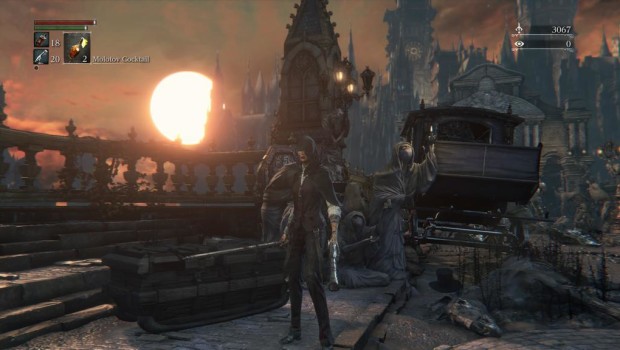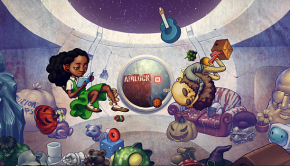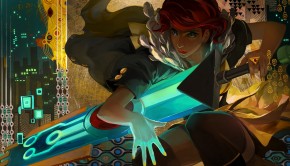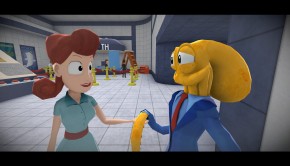Bloodborne: The Authentic European Hellscape Vacation
So I promise I will talk about Bloodborne but you know, everyone is talking about Bloodborne. So let’s talk about Tsutomu Nihei for a second.
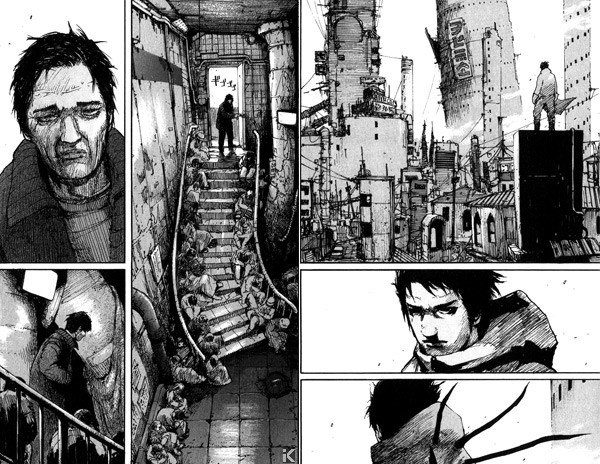 Tsutomu Nihei is a manga artist and writer who draws these vast, inscrutable science fiction comics; in the early 00s he was drawing Blame!, which was about this laconic man trying to find someone with the correct genes for logging onto the Internet in a 778,547,200-kilometer (the distance from here to Jupiter) megastructure that had been built around Earth by AIs which humans could no longer understand or control. If you just read Blame! though, you wouldn’t really even know that, except by implication and the small details that are spread throughout the ten volumes, because most of the manga is dedicated to depicting the massive, endless architecture of this structure and the civilizations and people that inhabit it. Nihei is the sort of artist who will give you a whole chapter with the protagonists just wandering through room after room with almost no dialogue–why ruin the view with word balloons? The civilizations are inscrutable and strange, and their history and function are half revealed and mostly implication. When so much science fiction and fantasy long to dump meaningless exposition on the reader, it’s actually super respectful and kind for Nihei to trust himself and the reader that the space and inhabitants of this world make it a place you will want to visit. Anyways that’s why I like Bloodborne.
Tsutomu Nihei is a manga artist and writer who draws these vast, inscrutable science fiction comics; in the early 00s he was drawing Blame!, which was about this laconic man trying to find someone with the correct genes for logging onto the Internet in a 778,547,200-kilometer (the distance from here to Jupiter) megastructure that had been built around Earth by AIs which humans could no longer understand or control. If you just read Blame! though, you wouldn’t really even know that, except by implication and the small details that are spread throughout the ten volumes, because most of the manga is dedicated to depicting the massive, endless architecture of this structure and the civilizations and people that inhabit it. Nihei is the sort of artist who will give you a whole chapter with the protagonists just wandering through room after room with almost no dialogue–why ruin the view with word balloons? The civilizations are inscrutable and strange, and their history and function are half revealed and mostly implication. When so much science fiction and fantasy long to dump meaningless exposition on the reader, it’s actually super respectful and kind for Nihei to trust himself and the reader that the space and inhabitants of this world make it a place you will want to visit. Anyways that’s why I like Bloodborne.
Like Nihei’s comics, so much of Hidetaka Miyazaki’s games is in the place. For me it’s hard to think of any better praise at all than if a game can give me a genuine call in my heart that I wish I could be in the place it shows me. Extra special bonus points if it can spark that feeling for a place that is utterly, objectively, horrible: because Yharnam, the lethal and disturbing city in the midst of total disaster which Bloodborne is set in, is all those things and more. While the Souls games depicted ancient medieval ruins that were empty except for demons and the dead, you are put in Yharnam right at the moment that will destroy it forever. You can tell the instant you get your first view of the city, under an angry orange sunset with embers in the air, hearing the bell toll while mobs of men with cruel weapons screech in the streets alongside coffins and wrecked carriages and hooded, supplicating statues.
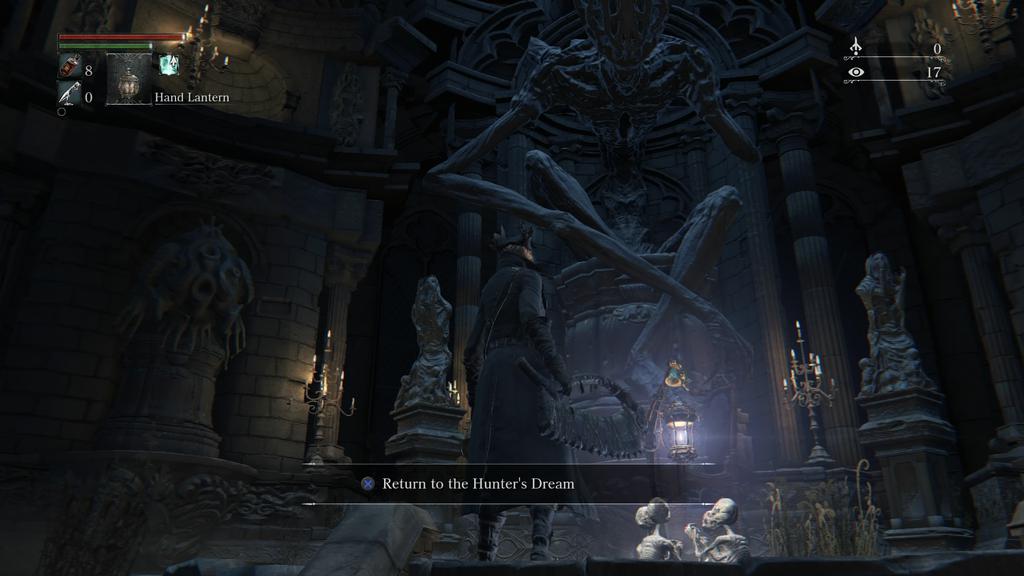 What’s neat is how much the world is suggested in something as narrowly and tightly designed as a haunted house or a European cathedral. Bloodborne suggests a whole world but takes place in levels obviously, fastidiously designed; from every screaming man that pops out of an unexpected place, to the massively powerful unique monster guarding absolutely nothing. The current fashion in AAA design is to convey a sense of place with an open world that you spend most of your time flying around, because when you stop to examine it and explore deeper, you’ll find it is of course just a set. Bloodborne gives you a small series of neighborhoods instead of a city, but these streets have nooks and crannies and go so, so deep. There’s a hall that leads to a warehouse and that warehouse has a secret top floor and a bottom floor where the viaduct begins, and you can follow the water either above it or sloshing through it, and it empties into a mass of bodies that come to life when you get too close, and the water eventually flows beneath a bridge where a massive pig is waiting to chase anyone who tries to enter the tunnel. Much like the way Nihei obviously guides you through his massive spaces in a strictly linear, panel-by-panel comic, this game, tightly paced and obsessively level designed, isn’t any different, but it feels so alive. This place that never could or should or will exist feels so real, and I may find the bosses frustrating, the systems sometimes janky and unfair, but I do really want to spend time here.
What’s neat is how much the world is suggested in something as narrowly and tightly designed as a haunted house or a European cathedral. Bloodborne suggests a whole world but takes place in levels obviously, fastidiously designed; from every screaming man that pops out of an unexpected place, to the massively powerful unique monster guarding absolutely nothing. The current fashion in AAA design is to convey a sense of place with an open world that you spend most of your time flying around, because when you stop to examine it and explore deeper, you’ll find it is of course just a set. Bloodborne gives you a small series of neighborhoods instead of a city, but these streets have nooks and crannies and go so, so deep. There’s a hall that leads to a warehouse and that warehouse has a secret top floor and a bottom floor where the viaduct begins, and you can follow the water either above it or sloshing through it, and it empties into a mass of bodies that come to life when you get too close, and the water eventually flows beneath a bridge where a massive pig is waiting to chase anyone who tries to enter the tunnel. Much like the way Nihei obviously guides you through his massive spaces in a strictly linear, panel-by-panel comic, this game, tightly paced and obsessively level designed, isn’t any different, but it feels so alive. This place that never could or should or will exist feels so real, and I may find the bosses frustrating, the systems sometimes janky and unfair, but I do really want to spend time here.
It feels a little bit like taking an unfamiliar turn in a city and finding some hidden park with strange sculptures and no explanation or context, and a winding path out that takes you to a restaurant by the river, except, you know, with tons of monsters trying to murder you. It’s the slowly revealed world that makes a place feel like a place, the way Blame! and Nihei’s other work take you panel by panel through stairways and halls and vistas. The space makes sense but it’s also full of mysteries—you can tell from the posture and state of decay of the bodies that they were dumped in the river, but not by who, or how they came back to life. The pig is a puzzle and also a suggestion; both that you need to get around him and also that you can. There are layers and textures to these spaces; they have the same sort of complexity that makes for good characters. I like a world that has room for me in it. Even though literally everything in Bloodborne hates me and wants me to die, there’s room in this game for me to put myself in. I don’t think much about the character I play except in games that give me interesting places to put her, but here there’s room to explore and imagine all by myself. So many games try so hard to make you believe you’re important, but I don’t want to be praised. I just want some space to be.

